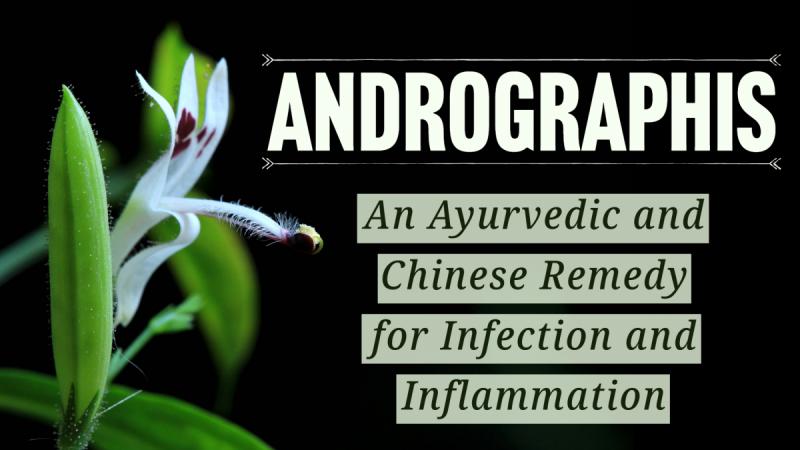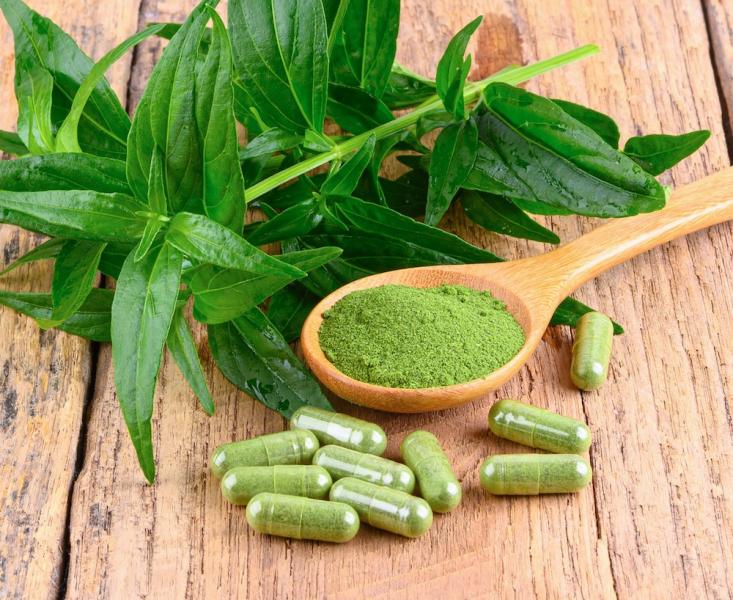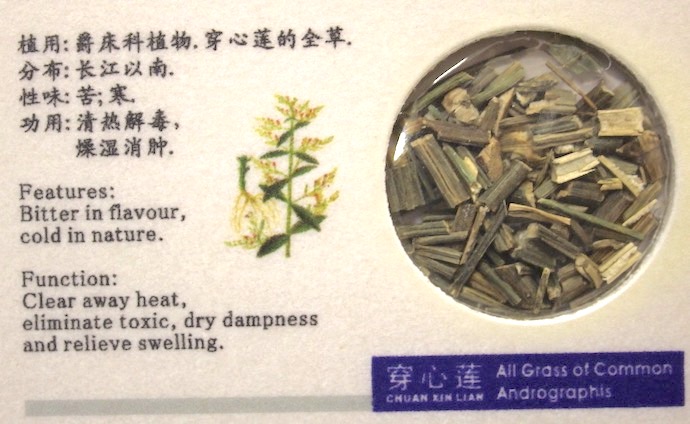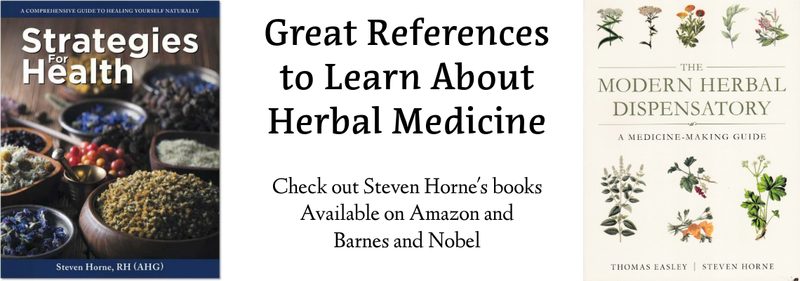
Andrographis has a long history of use in Ayurvedic and Chinese medicine. It grows all over India in a wide variety of soils, including plains, hillsides, roadsides, and seashores, in both dry and wet soils. In Northeastern India it’s known as maha-tita, which means “king of bitters.” Its cooling and antimicrobial properties have led to its use for a wide variety of ailments.
Andrographis Research
 Andrographis began to appear as a remedy in the West and in Western herbal formulas because of research showing it was beneficial for infections. In one double-blind clinical study it was tested as a remedy for upper respiratory tract infections, including sinusitis. There were 95 individuals in the study who were treated with andrographis and 90 people in the control group.
Andrographis began to appear as a remedy in the West and in Western herbal formulas because of research showing it was beneficial for infections. In one double-blind clinical study it was tested as a remedy for upper respiratory tract infections, including sinusitis. There were 95 individuals in the study who were treated with andrographis and 90 people in the control group.
The remedy was administered for five days and those who received the andrographis had reduced nasal and throat symptoms, less headaches, and generally felt better. There was no difference in symptoms like coughs or eye irritations. The conclusion was that andrographis helps relieve inflammation in upper respiratory tract infections and sinusitis.1
Another study using a formula where Andrographis was the principal component suggested it can help to prevent colds, too.2 Patients treated with Andrographis for three months were 2.1 times less likely to catch colds than a placebo group
Andrographis and Infection
Andrographis reduces fatigue, earache, sore throat, sinus congestion, and fever associated with colds and other upper respiratory infections. Andrographis extracts have been shown to mildly inhibit Staphylococcus aureus, Pseudomonas aeruginous, Proteus vulgaris, Shigella dysenteriae, and Escherichia coli. It also has an antiviral action and may be particularly helpful for HIV. Andrographis is also recommended as a treatment for Lyme disease. It can be applied to tick bites to prevent infection or used as part of a treatment protocol for someone with Lyme disease.
Because of this research, many have added andrographis as an ingredient in cold and flu formulas, immune-boosting formulas, and formulas for sinus infections. You’ll find it combined with herbs like echinacea, cat’s claw, astragalus, oregano, and olive leaf for these purposes.
Other Actions of Andrographis
 Bitter-tasting herbs are generally cooling in their energy and andrographis is no exception. It contains compounds that reduce both inflammation and fever. It appears to reduce inflammation caused by chemical exposure and also by allergic reactions involving histamine. So, I’ve also seen andrographis being used in formulas to reduce inflammation alongside ingredients like boswellia, turmeric, willow bark, and mangosteen.
Bitter-tasting herbs are generally cooling in their energy and andrographis is no exception. It contains compounds that reduce both inflammation and fever. It appears to reduce inflammation caused by chemical exposure and also by allergic reactions involving histamine. So, I’ve also seen andrographis being used in formulas to reduce inflammation alongside ingredients like boswellia, turmeric, willow bark, and mangosteen.
Andrographis has been used in Ayurvedic medicine for diarrhea, dyspepsia, lack of bile flow, hepatitis, malaria, pneumonia, and tonsillitis. It is primarily helpful for diarrhea caused by bacterial infections. It also has hepatoprotective effects. It stimulates the flow of bile and aids the liver’s detoxification system to help rid the body of various chemicals. It has also been helpful for infectious hepatitis (type A). Andrographis may also have some anti-carcinogenic activity by helping the body neutralize certain toxins.
Andrographis may be taken in a tincture or capsule form or as part of a formula. The dosage of a 1:4 tincture would be about 20-40 drops up to four times a day. In capsule form, the dose would be 1-2 400 mg. capsules two or three times a day.
Andrographis may cause digestive upset in some people. It has some anti-fertility activity so should be avoided while trying to get pregnant. Use with caution if you are pregnant or nursing.
References
- Gabrielan, E. S., et al. A double-blind, placebo-controlled study of Andrographis paniculata fixed combination Kan Jang in the treatment of acute upper respiratory tract infections including sinusitis. Phytomedicine. 9(7):589-597, 2002. Erebuni, Medical Centre, Yerevan, Armenia.
- Hancke, J. L., et al. A double-blind study with a new mono drug Kan Jang: decrease of symptoms and improvements in recovery from common colds. Phytotherapy Research. 9:559-562,
Steven's Articles
-

-
Barberry and Healthy Personal Boundaries
A thorny shrub for fighting infections and supporting…
December
-

-
The Evidence for Berberine
A yellow alkaloid found in traditional infection-fighting…
-

-
The Sensible Use of Caffeinated Herbs
Kola nuts, guarana, and yerba mate and other herbs…
-

-
The Health Benefits and Problems with Coffee
This popular caffeinated beverage can be beneficial…
October
-

-
Understanding Caffeine & Cellular Adaptation
Preserving the power of caffeine's buzz and the…
September
-

-
Horseradish
A pungent spice for aiding protein metabolism…
-

-
Banaba or Crepe Myrtle
A beautiful tree from Southeast Asia whose leaves…
August
-

-
Monkeyflowers
Flower essences to help see ourselves more clearly…
-

-
Mariposa Lilies
Strengthening the bond between mother and child…
-

-
The Noble Bay Leaf
A common kitchen herb for aiding digestion and…
-

-
Epimedium: Horny Goat Weed
A circulatory stimulant and kidney yang tonic…
July
-

-
The Medicinal and Nutritional Benefits of Apricots
A nutritious fruit and valuable medicinal seed for coughs
-

-
Dogwoods
Asian dogwood is used to stop excessive discharge,…
June
-

-
Neem: The Village Pharmacy
A popular Ayurvedic remedy for dental and immune…
-

-
Spilanthes: The Toothache Plant
A traditional remedy for teeth and gums, as well…

